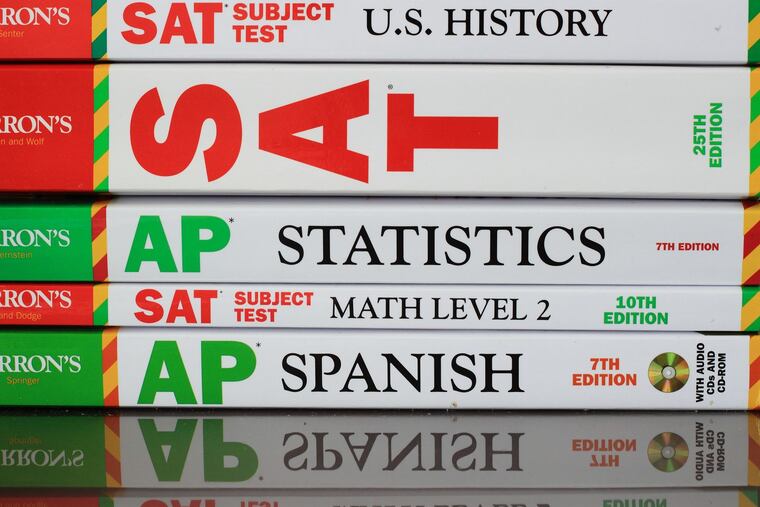Standardized tests like SAT and ACT favor students with family wealth | Opinion
The fairest way to handle college admissions tests is for more schools to make them optional.

The season of college admissions testing is upon us once again. High school students across the country have recently taken or are preparing to take one of the two high-stakes standardized tests for college admissions: the ACT and SAT. This educational ritual happens annually — as do discussions of how fair these tests are.
Last year, the College Board proposed and then quickly abandoned adding an “adversity score” to the SAT assessing students’ educational and socioeconomic backgrounds. Just this month, ACT officials announced that test-takers can retake individual sections of the test to improve their overall score, starting next September.
Much of the discourse on fairness in college admissions testing is informed by the tests’ associations with race/ethnicity, gender, parents’ education, and family income, as well as where a test-taker lives and goes to school. But we are missing part of the discussion. While the SAT has been characterized as a “wealth test," wherein student performance tracks with family income, families’ accumulated assets are rarely measured in association with college admissions tests. There is good reason to consider this factor more closely.
Family wealth, including inheritances and property ownership, and family income each produce distinct dynamics of social stratification. As a common measure of economic status, family income is earned annually, not accumulated, and is much more influenced by market fluctuations such as unemployment, promotions and raises, and recessions. Although family wealth is not immune to market fluctuations, it accumulates over time and generations, enables access to well-resourced neighborhoods and schools, and provides financial security especially during times of economic austerity. These institutional structures for wealth accumulation have historically favored white males.
Since the mid-1970s, the United States has experienced increasing inequality in family wealth holdings where the top 20 percent as of 2016 held 77 percent of the nation’s total household wealth.
This disparity is even more pronounced when accounting for race. The Brandeis University Institute on Assets and Social Policy estimated that the asset-holding differential between black and white families tripled between 1984 ($85,000) and 2009 ($236,500). They also recently estimated that of those college students that enrolled in college in 1995-1996, white student loan borrowers on average paid off 94 percent of their debt 20 years later, while black borrowers continued to owe 95 percent of their student loan debt. It turns out these processes of stratification matter for college admissions tests.
In my most recent book, Inheriting Possibility, I examined family wealth in association with SAT scores. I found that, one, family wealth has even closer ties to SAT scores than does parents’ income or education. And two, my research showed that the estimated SAT score difference between youth with $125,000 (the midpoint of the sample I looked at) in hard-to-sell family assets — like real estate, business ownership, and collectibles — and those with no such family assets was 141 points on the old SAT total score scale.
These associations with family background and resources raise questions of fairness and equity in college admissions testing. The stratifying process of test scores is more complicated than it often appears. For one thing, wealthier test-takers have access to educational resources and opportunities, such as extensive coaching, that prepare them for the particular constructs and design of the tests. Beyond that, those who have more resources and come from generations of higher education are not just more likely to access those preparation opportunities — they also grow up in homes where the linguistic and cultural practices are more associated with the type of reasoning measured on the test.
The theory and design of college admissions tests continue to falsely assume that mathematical and verbal reasoning are universal. Both tests not only assume that processes of human reasoning are the same for everyone, but that human reason behaviorally manifests the same across social and cultural context and history.
The latter issue is important. It is, in part, what privileges the reason of particular cultural communities over and against others. Work in culture and learning science has demonstrated how both mathematics and reading are embodied cultural practices that are formed based on social context. Yet, college admissions tests continue to be designed with a particular cultural logic and practice of mathematics and critical reading, while maintaining false and marginalizing assumptions of meritocracy and instrument objectivity.
To address these concerns of fairness and equity, the system of higher education needs to rethink its arrangements with college admissions tests. If colleges and universities want to enable greater equity in higher education admissions, then more colleges and universities need to give applicants greater agency by making college admissions tests optional.
Ezekiel J. Dixon-Román is an Associate Professor in the School of Social Policy & Practice at the University of Pennsylvania. He is the author of “Inheriting Possibility: Social Reproduction & Quantification in Education” (2017, University of Minnesota Press).